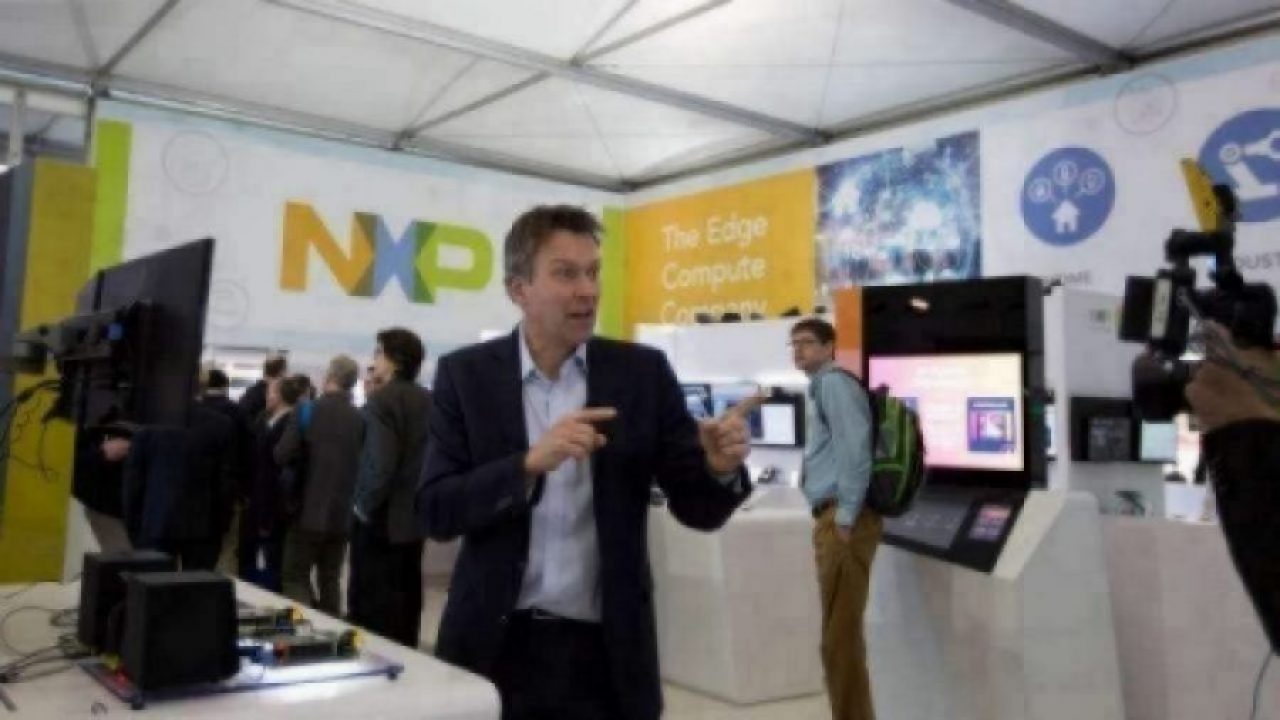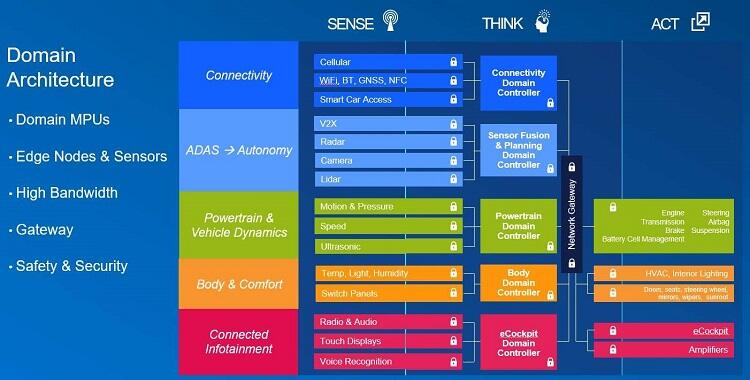Q&A with NXP’s New CTO, Lars Reger
Article By : Junko Yoshida

Last month, Lars Reger became CTO for all of NXP Semiconductors - the sort of role that has lots of faith-shaking pitfalls. I wonder what challenges it will bring and what changes he might bring to NXP.
Lars Reger at NXP is one corporate executive who I happen to interview regularly. For a reporter whose beat includes automotive, Reger, as CTO of NXP’s automotive business, is both a familiar face and an important voice. Fortunately, he’s been willing to share his views on what’s happening in the industry.
About a month ago, Reger became chief technology officer across all of NXP’s business activities. I suspect that I’m not the only one who secretly applauded his promotion.
But I don’t presume to know much about him.
I do consider myself lucky for a few occasions that I’ve gotten to hear him talk passionately on some of his pet topics, including NXP’s efforts to drive eCall in Europe (2010–2011); NXP’s pursuit of V2X; NXP’s first radar chip (2015); autonomous vehicles; and the Qualcomm/NXP deal that did not happen (2018).
In each interview, what impressed me most wasn’t his product pitch but, rather, how he tells a story. His passion comes through, and his excitement comes alive. He’s earnest and infectious. If sheer energy were the key to credibility, I doubt that anybody could resist believing this guy’s every word.
Now, however, Reger is CTO for all of NXP Semiconductors — the sort of role that has lots of faith-shaking pitfalls. I wonder what challenges it will bring and what changes he might bring to NXP.
I caught up with him the day before the Consumer Electronics Show lifted its curtain in Las Vegas. The following are excerpts of our conversation.
EE Times: As NXP’s new CTO, you’re responsible for “managing new business activities and R&D” in such markets as automotive, Industry 4.0., internet of things, mobile, and connectivity and infrastructure, according to the press release. This is a long list. How are you planning to manage it all?
Reger:We have a strategy. We plan to develop a reference design that is scalable and applicable to all different markets.
EE Times: What do you mean by that? What exactly does your reference design entail?
Reger: Remember when we talked about the automotive market, we discussed “sense, think, and act”? Here’s a slide [showing the chart below].

* (Source: NXP)
EE Times: Right. We talked about this when you briefed me on NXP’s plans to build a platform that scales from ADAS to autonomous vehicles (AVs).
Reger: Exactly. This idea of “sense, think, and act” isn’t just for automotive. This applies to everything from Industry 4.0 and IoT to connectivity and infrastructure. The goal for us is to leverage what we have on one side of the chart (whether it is a sensor, MCU, connectivity, security, or safety) to develop a scalable reference design that works across different product platforms.
EE Times: But the chart looks more about business strategy than technology development. Is this what a CTO is expected to do?
Reger: I think the role of CTOs in recent days has substantially changed. A CTO is no longer someone who heads up the research kingdom — with a lot of fellows — inside a corporation.
EE Times: It isn’t?
Reger: Of course, we have world-class technology creators in our research. But I think what a corporation looks for in a CTO these days is a business-savvy person with a technical background who’s willing to play with many building blocks within a company, as though they play with Legos.
EE Times: Again, that’s quite a change compared to an era when the director of the lab was responsible for all things related to science, research, and development.
Reger: I see my role as a CTO is to take legacy products and technologies, and I map them out — in an unconstrained manner — over different projects and businesses.
EE Times: Unconstrained?
Reger: Yes. You must be able to imagine it freely and dream about what it would look like 10 years from now.
EE Times: Did you always want to become a CTO?
Reger: No. This was not planned. I think I was lucky.
EE Times: How so?
Reger: When I joined NXP more than 10 years ago, it wasn’t planned. I wasn’t even looking for a job. But I was approached by several different recruiters … in parallel … all for the same NXP position. They were looking for someone with a semiconductor background [Reger started out as a semiconductor engineer at Siemens, which later became Infineon], automotive experience [he worked at Continental], scientific background [he is a physicist by education], and some business background [a graduate of the London School of Economics]. I just happened to fit the bill — as someone who can be responsible for both R&D and product execution as NXP’s automotive CTO.

Lars Reger, constantly moving, inside NXP's booth at CES 2019 (Photo: NXP)
EE Times: So which part of your experience do you think qualifies you as NXP’s CTO? Obviously, you know the technology and the products of NXP well…
Reger: You know, when I was growing up, I think I was a kid living in a bit of a fantasy land. I liked thinking about building things. Even though I was never particularly good at building stuff, I always liked to imagine things — what it would be like if I could. That part of me — unconstrained imagination — is still with me.
Another thing is that I’ve always believed that it’s critical to establish a common language for people working in different departments serving different market segments. As CTO, my job is to articulate what we are doing for the entire company in the language everyone understands.
In fact, the chart I showed you before, that’s something I created some time ago. It resonated with many people. The chart illustrates commonalities across different businesses. Whether you are building an IoT device, a drone, or autonomous farm equipment, each requires elements of “sense, think, and act.” There is a thread.
EE Times: As NXP’s CTO, what do you see is the biggest technology agenda?
Reger: I think it’s about filtering … filtering data.
For 10 years, we’ve been focused on connectivity. Connectivity is critical so that sensed data can have access to the brain.
However, our “think” activities have been somewhat limited because the brain requires far more processing power.
[Rather than forcing brute-force processing onto unfiltered data,] we need to be smart about how best to filter data. We must extract the right data at the right stage. Filtering will determine the type of network we rely on. Filtering also helps our customers to look at the most important data.
Equally important is to apply the right level of deep learning to data. We need smarter algorithms for anomaly detection. I see [that] machine learning applies to every thing from radars and camera systems to predictions/planning by autonomous vehicles.
EE Times: What do you think is the most important role you can play as CTO?
Reger: The CTO should play a collaborative function with people inside the company and outside the company. My job is to let people play with our stuff and explain what they could do with it. Along with it, I hope to be able to demystify technology — including AI.
I’ve always found Reger not only eminently approachable but also great at deciphering technologies. You’ve gotta love a guy who can translate the technology of NXP’s autonomous vehicle chips into an analogy to human brains and muscle reflex. If a modern CTO’s job description, indeed, includes being a chief persuasion officer, it’s hard to find anyone who beats Reger.
However, as always, after talking the talk comes walking the walk.
Subscribe to Newsletter
Test Qr code text s ss



